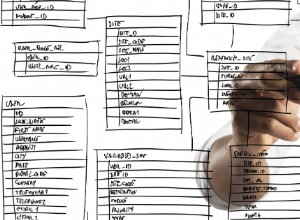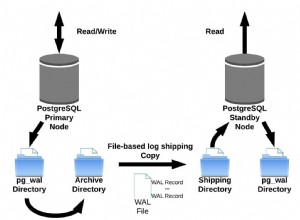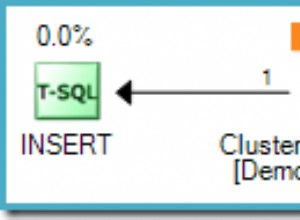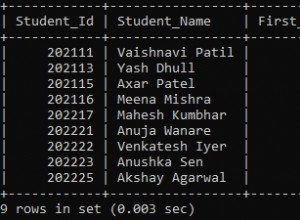câu trả lời này đã được giải quyết bằng cách sử dụng Tập hợp kết quả phân trang đã viết truy vấn với các câu lệnh chuẩn bị sẵn, phương pháp 2.
mã đầy đủ để tham khảo như dưới đây. Cảm ơn
<?php
// Script and tutorial written by Adam Khoury @ developphp.com
// Line by line explanation : youtube.com/watch?v=T2QFNu_mivw
include_once("storescripts/connect_to_mysqli.php");
// This first query is just to get the total count of rows
$stmt=$myConnection->prepare('SELECT COUNT(id) FROM products');
// Don't use bind_result()...
// execute your statement
$stmt->execute();
// Get result set into a MySQLi result resource
$result = $stmt->bind_result($id);
// array to hold all rows
$rows = array();
// All results bound to output vars
while ($stmt->fetch()) {
// Append an array containing your result vars onto the rowset array
$rows[] = array(
'id' => $id
);
}
$rows=$id;
// This is the number of results we want displayed per page
$page_rows = 10;
// This tells us the page number of our last page
$last = ceil($rows/$page_rows);
// This makes sure $last cannot be less than 1
if($last < 1){
$last = 1;
}
// Establish the $pagenum variable
$pagenum = 1;
// Get pagenum from URL vars if it is present, else it is = 1
if(isset($_GET['pn'])){
$pagenum = preg_replace('#[^0-9]#', '', $_GET['pn']);
}
// This makes sure the page number isn't below 1, or more than our $last page
if ($pagenum < 1) {
$pagenum = 1;
} else if ($pagenum > $last) {
$pagenum = $last;
}
$dynamicList = "";
$stmt = $myConnection->prepare('SELECT id,product_name,price FROM products ORDER BY product_name LIMIT ?,? ');
$begin= ($pagenum - 1) * $page_rows;
$end= $page_rows;
$stmt->bind_param('ii',$begin,$end);
$stmt->execute();
/* store result */
$stmt->store_result();
/* get the row count */
$count = $stmt->num_rows;
if ($count >= 1) {
$stmt->bind_result($id, $product_name, $price);
// This shows the user what page they are on, and the total number of pages
$textline1 = "Products (<b>$rows</b>)";
$textline2 = "Page <b>$pagenum</b> of <b>$last</b>";
// Establish the $paginationCtrls variable
$paginationCtrls = '';
// If there is more than 1 page worth of results
if($last != 1){
/* First we check if we are on page one. If we are then we don't need a link to
the previous page or the first page so we do nothing. If we aren't then we
generate links to the first page, and to the previous page. */
if ($pagenum > 1) {
$previous = $pagenum - 1;
$paginationCtrls .= '<a href="'.$_SERVER['PHP_SELF'].'?pn='.$previous.'">Previous</a> ';
// Render clickable number links that should appear on the left of the target page number
for($i = $pagenum-4; $i < $pagenum; $i++){
if($i > 0){
$paginationCtrls .= '<a href="'.$_SERVER['PHP_SELF'].'?pn='.$i.'">'.$i.'</a> ';
}
}
}
// Render the target page number, but without it being a link
$paginationCtrls .= ''.$pagenum.' ';
// Render clickable number links that should appear on the right of the target page number
for($i = $pagenum+1; $i <= $last; $i++){
$paginationCtrls .= '<a href="'.$_SERVER['PHP_SELF'].'?pn='.$i.'">'.$i.'</a> ';
if($i >= $pagenum+4){
break;
}
}
// This does the same as above, only checking if we are on the last page, and then generating the "Next"
if ($pagenum != $last) {
$next = $pagenum + 1;
$paginationCtrls .= ' <a href="'.$_SERVER['PHP_SELF'].'?pn='.$next.'">Next</a> ';
}
}
while ($stmt->fetch()) {
"$id, $product_name, $price,";
$dynamicList .= "
<li><div class='product'>
<a href='product.php?id=$id' class='info'>
<span class='holder'>
<img src='inventory_images/$id.jpg' alt='$product_name' />
<span class='book-name'>$product_name</span>
</a>
<a href='product.php?id=$id' class='buy-btn'>RM<span class='price'>$price</span></a>
</div>
</li>
";
}
}
// Close your database connection
mysqli_close($myConnection);
?>
<!DOCTYPE html>
<html>
<head>
<style type="text/css">
body{ font-family:"Trebuchet MS", Arial, Helvetica, sans-serif;}
div#pagination_controls{font-size:21px;}
div#pagination_controls > a{ color:#06F; }
div#pagination_controls > a:visited{ color:#06F; }
</style>
</head>
<body>
<div>
<h2><?php echo $textline1; ?> Paged</h2>
<p><?php echo $textline2; ?></p>
<p><?php echo $dynamicList; ?></p>
<div id="pagination_controls"><?php echo $paginationCtrls; ?></div>
</div>
</body>
</html>




